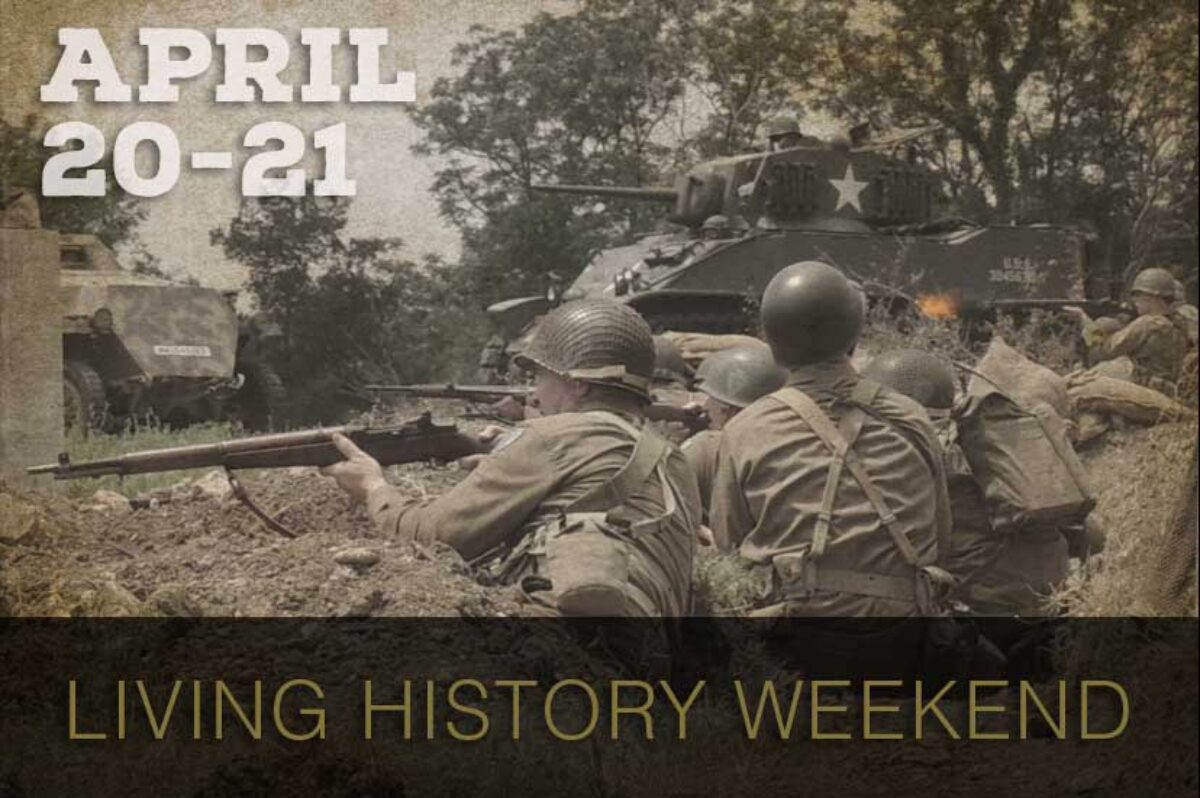We recently received a donation of four letters written by Captain Allen S. Anderson who served with the 31st Texas Cavalry, Confederate States of America in 1862. Transcriptions of al 4 letters are available here: https://texasmilitaryforcesmuseum.org/wp-content/uploads/2021/09/Anderson-letter-transcriptions.pdf
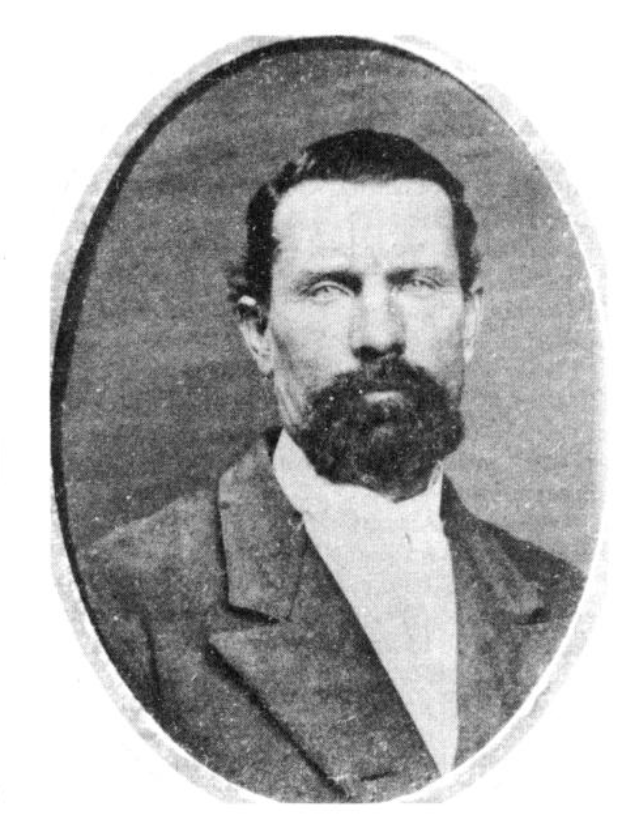
Allen Anderson was born in Florida in 1830, moved to Mississippi, then arrived in Texas in the 1856 where he set up in Bosque County. He was married to Mary Robinson in September 1856. In 1860, He, Mary and their son Archibald were living in Bosque county were Anderson was a Stock Rancher and the Assistant Marshal:
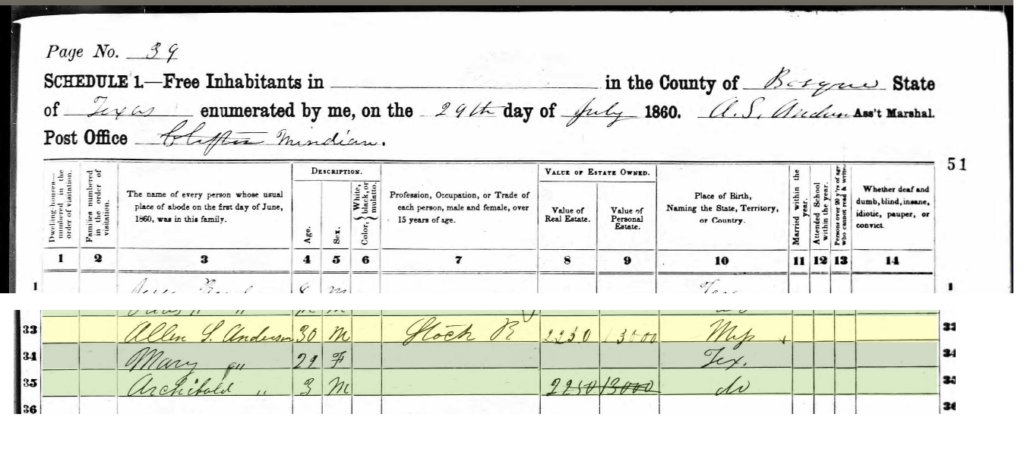
In April 1862, Allen joined Hawpe’s Regiment of Texas Cavalry and was put in charge of Company B, 31st Texas Cavalry.
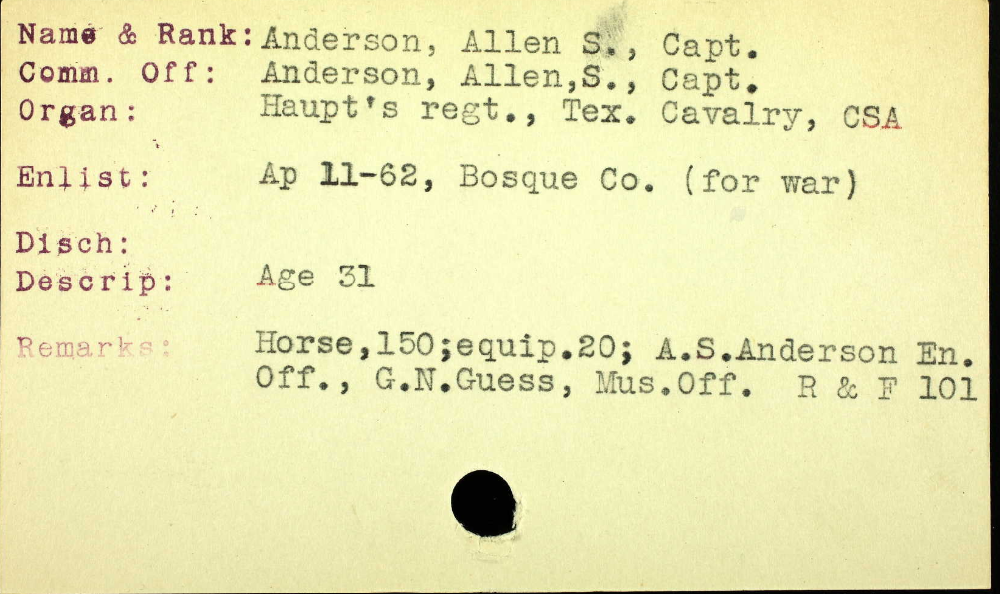
Between April and November 1862 Captain Anderson wrote letters to his wife Mary, four of which were donated to the museum: April 30, 1862, June 25, 1862, September 18, 1862 and October 3, 1862. Transcriptions for all 4 letters can be found at the top of the page. In the letters he speaks of camp life, their mutual friends, discipline in his company, and the battle of Newtonia, MO. The letters are well written and full of descriptive details. His unit, the 31st Texas Cavalry, fought skirmish’s in Arkansas, and Missouri in the spring and fall of 1862. Anderson was wounded by gunfire near Fort Smith Arkansas, and requested a discharge on November 20, 1862 which was granted by President Jefferson Davis on December 24, 1862. Captain Allen S. Anderson returned to Texas and fought as part of the Frontier Protective Unit.
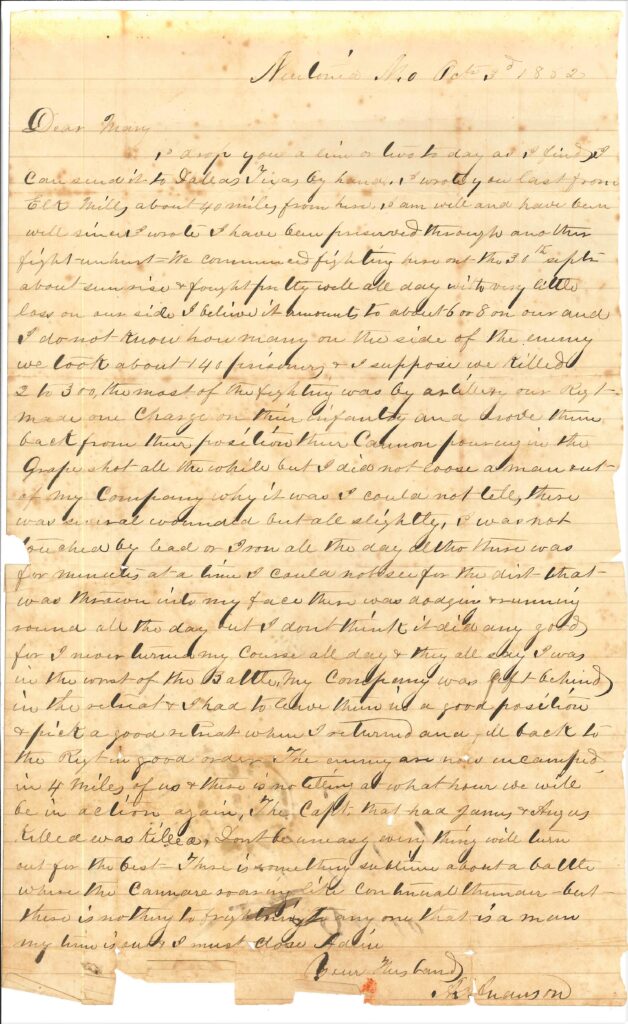
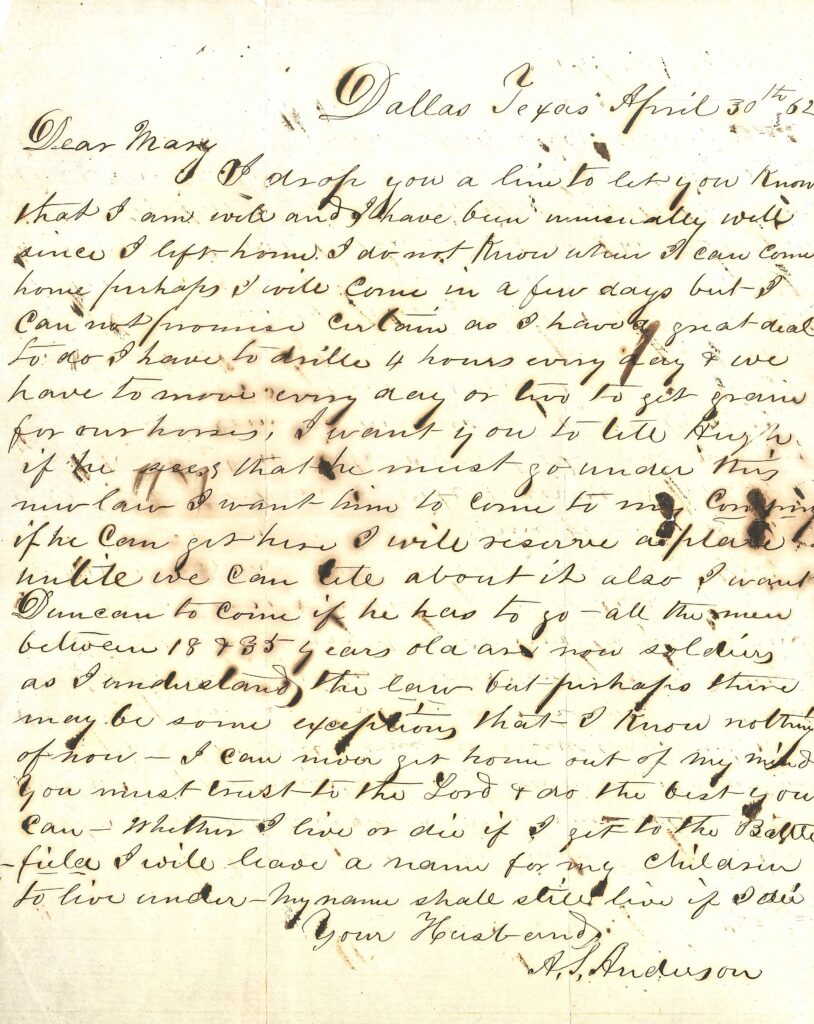
After his return to Texas Captain Anderson’s life took an unexpected turn in June 1864. There are a couple of different versions of what happened. This one comes from the book ” Comanche Indian Fights on the Texas Frontier” by E.L.Deaton published in 1895 it says…In the summer of 1864 Indians came in and stole a lot of horses. The group followed for a day and gave up then the next day as they approached Blanket Creek they saw a horse that had a halter and was sweaty where a blanket had been. Captain Anderson said he saw an Indian go into the thicket E.L.Deaton, Captain Anderson and Aaron Cunningham charged at full speed because they had the best horses. Anderson was in the lead and charged into the thicket. Captain Anderson said he saw an Indian go into the thicket. John Cox cocked his gun thinking Allen was an Indian. Captain Cunningham asked Cox if he saw an Indian and Cox said yes. Cunningham said shoot quick. Cox shot at the hulk. Anderson yelled once, ran out of the thicket and fell into Bill Kingsberry’s arms. He said take my gun and kill him. Cox loaded his gun, came round and saw Anderson was dead. Cox said “My God boys, is it possible that I killed my friend?” He was overcome with grief and wept bitterly. He seemed almost paralyzed. It was an honest mistake but the thought of killing his friend was more than he could bear. Those present at the killing of Captain Anderson were: F.M.Collier, Capt.Jas.Cunningham, Aaron Cunningham, Wally Cox, Tom Deaton, Tom Corn, John Cox, Bill Kingsberry and E.L.Deaton and one or two others he forgot. Another slightly longer version can be found in “The Quirt and the Spur” by Edgar Rye.
Allen Anderson’s body was returned to Bosque County and buried in what is now the Oswald Cemetery in Clifton, Texas. Although his family is said to have moved the body at some point. “Captain Anderson’s wife and two children stayed in Bosque county, where his son, Archibald D., was elected sheriff. Flora, the daughter of Captain Anderson married Joseph A. Kemp, a successful merchant of Wichita Falls, Texas. Both of the families of Archibald D. Anderson and Joseph A. Kemp settled in Wichita Falls and became prominent in the development of that flourishing little city. The wife of Captain Anderson died at Clifton, Texas.” ( From The Quirt and the Spur)
